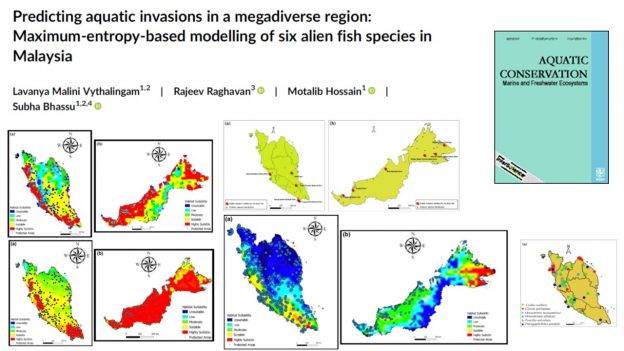Predicting Alien Life: Discovering New Non-Xenomorph Species On Earth

Table of Contents
Extremophiles: Earth's Alien Inhabitants
Extremophiles are organisms that thrive in environments previously considered uninhabitable for life as we know it. Their existence is profoundly significant in astrobiology, the study of life's origins, evolution, distribution, and future in the universe. Understanding their adaptations provides crucial clues about the potential for life on other planets, broadening our understanding of what constitutes a "habitable" environment. The study of extremophiles directly impacts our search for alien life and extraterrestrial life beyond Earth.
Here are some examples of extremophiles and their extreme habitats:
-
Thermophiles (heat-loving): These organisms flourish in extremely high temperatures. Thermus aquaticus, for instance, is a thermophilic bacterium whose enzyme Taq polymerase is crucial in Polymerase Chain Reaction (PCR) technology, a cornerstone of modern molecular biology. Its heat-resistant enzymes suggest that life could exist in volcanically active environments on other planets.
-
Psychrophiles (cold-loving): These extremophiles thrive in icy conditions, such as those found in the Antarctic ice. Studying their survival mechanisms could reveal how life might persist on icy moons like Europa and Enceladus, which are thought to possess subsurface oceans.
-
Halophiles (salt-loving): These organisms, often archaea, proliferate in extremely saline environments, like the Dead Sea. Their unique adaptations to high salt concentrations suggest that alien life could potentially exist in similarly salty environments on other planets.
-
Acidophiles (acid-loving): These bacteria have adapted to survive in highly acidic conditions, such as those found in acidic hot springs. Their survival in such harsh environments expands the possibilities for where alien life might be found.
-
Piezophiles (pressure-loving): These organisms, found in deep-sea trenches, can withstand immense pressure. Studying their adaptations helps us understand the potential for life in the deep oceans of other planets or moons.
Their adaptations – unique metabolic pathways, specialized cell structures, and protective mechanisms – offer invaluable insights into the diverse forms alien life could take. The presence of extremophiles on Earth significantly expands the range of environments where we should be searching for non-Earth life.
The Role of Extremophile Research in Predicting Alien Life
Studying extremophiles pushes the boundaries of our understanding of the limits of life. It shows us that life can exist in environments previously deemed uninhabitable, prompting a reassessment of where to search for extraterrestrial life. For example, the existence of extremophiles strengthens the possibility of life in subsurface oceans on icy moons like Europa and Enceladus, which are believed to harbor liquid water under thick layers of ice.
The search for biosignatures – chemical, isotopic, or geological indicators of past or present life – benefits greatly from extremophile research. Understanding the metabolic byproducts and geological imprints left by extremophiles helps scientists identify potential biosignatures on other planets. This search for alien life is fundamentally shaped by what we learn from these Earth-based extremophiles.
The concept of "habitable zones" – regions around a star where conditions are suitable for liquid water – is being challenged by the discovery of extremophiles. These organisms demonstrate that life can flourish outside the traditionally defined habitable zone, significantly expanding the potential locations for discovering alien life.
Beyond Extremophiles: Other Indicators of Alien Life Potential
While extremophiles offer crucial insights, the search for alien life employs other methodologies:
-
The search for exoplanets: The discovery of planets orbiting other stars greatly increases the number of potential places to search for extraterrestrial life.
-
Analysis of planetary atmospheres for biomarkers: Telescopic observations can analyze the atmospheres of exoplanets for the presence of gases indicative of biological processes, such as oxygen or methane.
-
The study of panspermia: This theory suggests that life could spread through space, carried by asteroids or comets, potentially explaining the shared characteristics of life on Earth and the possibility of life existing elsewhere.
The Implications of Discovering Alien Life (Non-Xenomorph Species)
The discovery of alien life would have profound philosophical and scientific implications. It would revolutionize our understanding of biology, evolution, and our place in the universe. Finding even microbial alien life would fundamentally alter our perspective on the uniqueness of life on Earth.
Ethical considerations would also arise. How should humanity approach contact with extraterrestrial life? What are our responsibilities towards other forms of alien life, and how do we ensure their protection? These are critical questions that must be addressed as our search for alien life intensifies. The discovery of non-Earth life could reshape the future of our species.
Conclusion
The study of extremophiles on Earth provides invaluable insights into the potential for alien life elsewhere in the universe. By understanding the remarkable adaptability of these organisms, we can better predict the characteristics of life that may exist beyond our planet, paving the way for a more informed and successful search for non-xenomorph species. The pursuit of understanding alien life is an ongoing journey, one fueled by scientific curiosity and the hope of discovering life beyond our own. Continue learning about the fascinating world of extremophiles and the ongoing search for alien life to expand your understanding of the possibilities that exist beyond our Earthly sphere.

Featured Posts
-
 World Figure Skating Championships Chock And Bates Pursuit Of A Third Title
May 27, 2025
World Figure Skating Championships Chock And Bates Pursuit Of A Third Title
May 27, 2025 -
 Alien Earth Complete Cast Announced Featuring Fargo Actors
May 27, 2025
Alien Earth Complete Cast Announced Featuring Fargo Actors
May 27, 2025 -
 Alien News Possible Xenomorph Reveal At Sxsw
May 27, 2025
Alien News Possible Xenomorph Reveal At Sxsw
May 27, 2025 -
 1035 The Beat Ray Js Comments On Kai Cenats Stream
May 27, 2025
1035 The Beat Ray Js Comments On Kai Cenats Stream
May 27, 2025 -
 Ru Pauls Drag Race All Stars Season 10 Cast Meet The Queens
May 27, 2025
Ru Pauls Drag Race All Stars Season 10 Cast Meet The Queens
May 27, 2025
Latest Posts
-
 Ti Na Deite Stin Tileorasi Tin Kyriaki 16 Martioy
May 30, 2025
Ti Na Deite Stin Tileorasi Tin Kyriaki 16 Martioy
May 30, 2025 -
 Kyriaki 16 Martioy Olokliromenos Odigos Tileoptikon Programmaton
May 30, 2025
Kyriaki 16 Martioy Olokliromenos Odigos Tileoptikon Programmaton
May 30, 2025 -
 Is A Nissan Primera Ev In The Works Exploring The Possibilities
May 30, 2025
Is A Nissan Primera Ev In The Works Exploring The Possibilities
May 30, 2025 -
 Tileoptiko Programma Kyriaki 16 3 Odigos Programmatos
May 30, 2025
Tileoptiko Programma Kyriaki 16 3 Odigos Programmatos
May 30, 2025 -
 The Future Of The Nissan Primera An Electric Sedan
May 30, 2025
The Future Of The Nissan Primera An Electric Sedan
May 30, 2025
